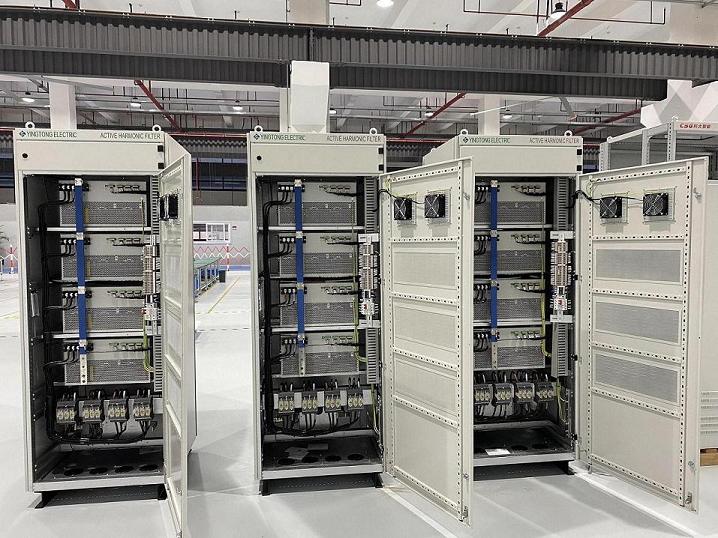
In today’s increasingly digital and power-electronic-driven world, understanding power quality parameters is essential—especially for engineers, technicians, and facility managers. One such important metric is THDi, or Total Harmonic Distortion of current. But what exactly is THDi, and how does it occur in electrical systems?
What is THDi?
THDi stands for Total Harmonic Distortion of current, and it measures how much a current waveform deviates from a pure sinusoidal form due to harmonics. Harmonics are voltage or current components at frequencies that are multiples of the fundamental frequency (usually 50 or 60 Hz). In simpler terms, harmonics distort the electrical waveform, and THDi quantifies this distortion in the current.
THDi is usually expressed as a percentage. A low THDi value (e.g., below 5%) indicates that the current waveform is close to an ideal sine wave, while a high THDi value (e.g., above 20%) means the waveform is highly distorted.
This distortion can lead to various issues in an electrical system, including overheating, reduced efficiency, equipment malfunctions, and interference with sensitive electronics.

How Does THDi Happen?
The main cause of high THDi in electrical systems is the use of non-linear loads. Unlike linear loads (such as resistive heaters or incandescent bulbs) that draw sinusoidal current, non-linear loads draw current in abrupt pulses rather than smooth waves, creating harmonics in the process.
Common sources of non-linear loads include:
- Variable Frequency Drives (VFDs)
- LED lighting systems
- Computers and office equipment
- UPS systems
- Switch-mode power supplies
- Battery chargers
These devices convert AC power into DC or regulate power through high-speed switching. This switching action distorts the waveform and generates harmonic currents.
Effects of High THDi
High THDi can have several negative consequences, including:
1. Overheating of Cables and Transformers: Harmonic currents cause additional heating in conductors and transformers, leading to thermal stress and reduced equipment lifespan.
2. Reduced Power Factor: Harmonics can distort the current waveform, lowering the true power factor and increasing apparent power, which can result in higher utility bills.
3. Malfunctioning of Equipment: Sensitive electronics like PLCs, sensors, and communication devices can experience data errors or misoperations in high-THDi environments.
4. Interference with Protective Devices: Circuit breakers and fuses may not operate correctly if the waveform is significantly distorted.
5. Resonance Problems: In some cases, harmonic currents can resonate with system capacitance or inductance, causing voltage amplification and potential equipment damage.
How to Reduce THDi
Reducing THDi involves a combination of design improvements and harmonic mitigation techniques:
1. Use of Passive Filters: Passive harmonic filters are tuned to block specific harmonic frequencies and prevent them from propagating.
2. Active Harmonic Filters (AHFs): These dynamically inject counter-harmonic currents to cancel out the distortion in real time.
3. K-rated Transformers: Special transformers designed to handle harmonic loads without overheating.
4. Line Reactors and Chokes: These components help to smooth out current spikes and reduce harmonics at the source.
5. Proper Load Balancing: Ensuring that loads are evenly distributed across phases can reduce neutral currents and associated harmonics.
6. Choosing Low-THD Equipment: Many modern devices are now designed to comply with harmonic emission standards such as IEEE 519 or IEC 61000-3-2.

Conclusion
Understanding THDi is critical for maintaining the health, efficiency, and reliability of electrical systems. As industries continue to adopt more electronic and digital devices, the presence of non-linear loads—and consequently, harmonic distortion—is on the rise. By identifying sources of harmonics and applying suitable mitigation techniques, facility managers and engineers can reduce THDi, lower energy costs, and extend the lifespan of equipment.
Harmonics might be invisible to the eye, but their effects on power systems are real and measurable. Monitoring and managing THDi is no longer optional—it's a necessary step toward smarter, cleaner, and more resilient electrical infrastructures.
For more information on how our AHFs and SVGs can help manage harmonics and improve power quality: contact us at sales@yt-electric.com.
Subscribe to us to enjoy event prices and get some of the best prices.
 IPv6 network supported
IPv6 network supported

